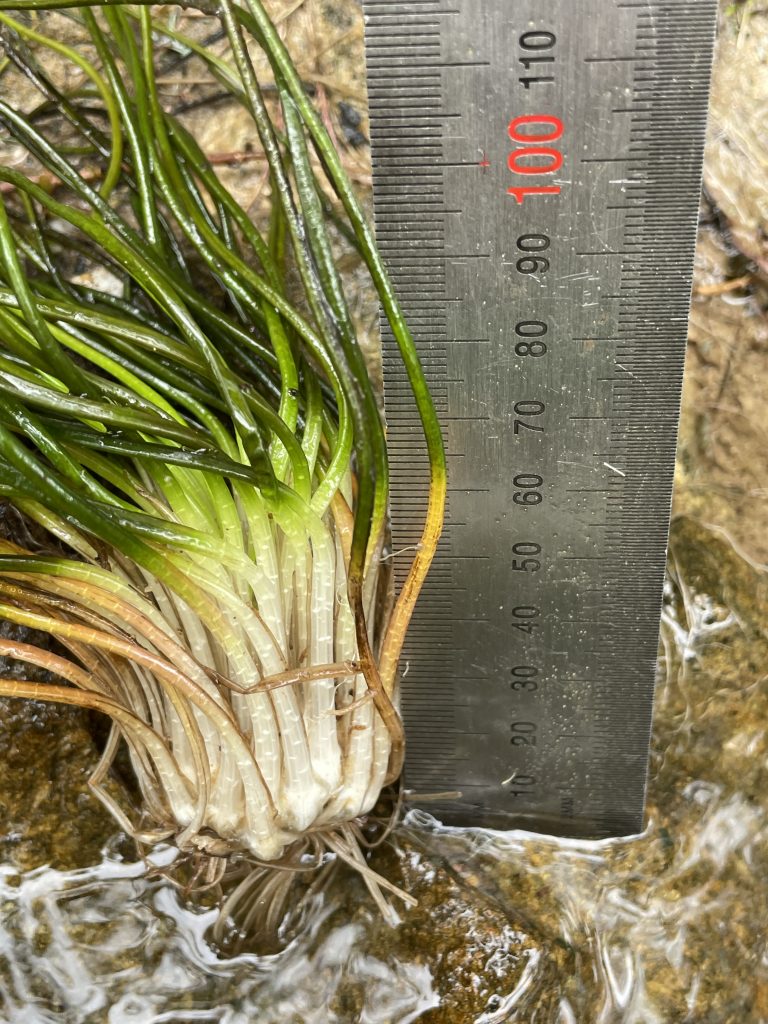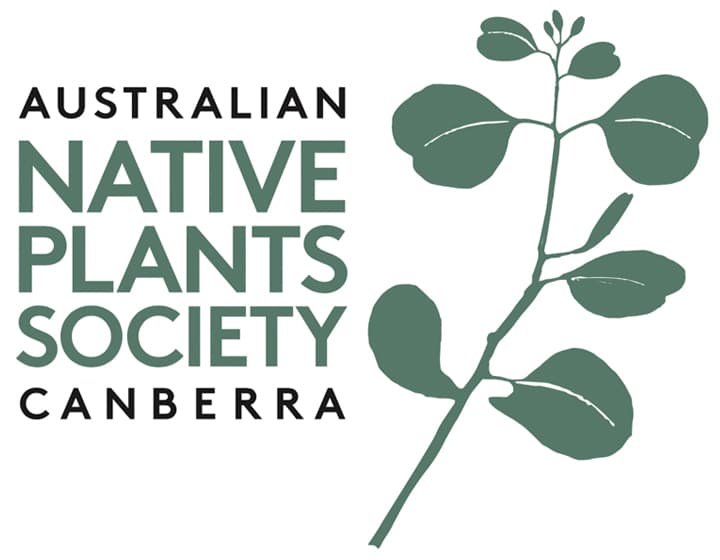Quillwort Isoetes muelleri in the ACT: a little plant, a big past, and an uncertain future
By Jane Roberts, Ecological Consultant (retired): Plants & vegetation of wetlands & rivers; Photos by Jane Roberts
Jul, 2024


Isoetes spp., whose common name is quillworts, are an ancient group of aquatic or amphibious herbs, with densely tufted leaves. Most Australian species are fairly short, less than 20 cm tall: the tallest species by far is Isoetes coromandelina, with leaves up to 80 cm. Like ferns and unlike nearly all other aquatic and amphibious plants, they do not have flowers. Also like ferns, they reproduce by spores and for this reason, were once treated as ferns. However, their life cycle is different and now they are recognised as distinct and in a different class (Lycopodiopsida) from ferns (Polypodiopsida, Psilotopsida), a class which occurs earlier on the evolutionary tree. A hint of this struggle to sort out their phylogeny is that older texts sometimes describe Isoetes as Fern Allies.
The name ‘quillwort’ is a portmanteau word, made up of ‘quill’ and ‘wort’. Quill refers to the leaf shape, which is a hollow tapering cylinder, like feathers once used for writing: and wort is an old word for a beneficial plant, meaning one used for food or medicine. Quillworts occur in various wet habitats, from still to flowing water, from permanently-wet (eg subalpine tarns, flowing creeks) to seasonally or temporarily wet (eg clay pans, rock pools). Some grow submerged, others are partly emerged. Most knowledge about Isoetes comes from the northern hemisphere. Studies of Isoetes in Australia are limited to taxonomy, species descriptions, community records, submerged photosynthesis. Topics directly relevant to conservation and management such as growth rates, dispersal, recovery and resilience of Australian species, are little known, other than longevity of spores in seed bank (Brock 2011).
Quillworts have some unusual traits. Unlike most plants, which take in carbon dioxide from the air through their stomates (little openings in their leaves), submerged Isoetes species take in carbon dioxide from sediments, via their roots. If water levels fall and the plants are exposed, these Isoetes can grow new ‘aerial’ leaves with stomates (Pedersen et al 2011). Again, unlike most plants which take in carbon dioxide during daylight, submerged Isoetes take it in by night, using a special photosynthetic pathway known as CAM (for Crassulacean Acid Metabolism).
World-wide, there are about 205 species of Isoetes. Australia has at least 15 species, making it a significant contributor to global diversity of Isoetes (Brunton and Troioa 2018). All Australian species are endemic except for one, Isoetes coromandelina which also occurs in SE Asia. The richest jurisdiction is Western Australia, with 9 species, which mostly occur in rock pools on granitic outcrops, followed by Tasmania. Rock pools are a harsh habitat for plants, being nutrient poor, hot and sometimes short-lived, and plants that live in these habitats (Isoetes is one of a handful of species that grow there, others being Glossostigma, Myriophyllum ) have specialisations (such as CAM).
The ACT has just one species, Isoetes muelleri. This is the most widely distributed Isoetes in Australia, occurring in all jurisdictions, and in a variety of climates. For example, in NSW, it occurs in Sturt NP and in Kosciusko NP; in still or flowing water (alpine lakes, creeks and rivers), in permanent or temporary pools (clay pans, gilgai depressions), and even in disturbed and modified habitats (farm dams, wet muddy roadsides).
Despite this, Isoetes has a disjunct distribution in New South Wales, being absent from Central Coast and Central Tablelands (McPhail and Case 2005). In the ACT, Isoetes muelleri is known from just 2 types of habitat, permanent flowing streams and rock pools, from just 7 localities (Table 1). To date, there are no ACT records from lowland parts of the ACT, or east of the Murrumbidgee River. Isoetes muelleri has ‘Rare’ status according to the spatial layer ‘ACT GOV Rare Plants Habitat’ (for plant species of conservation interest or listed as threatened in the ACT). But it is not listed as threatened under the relevant ACT legislation (ACT Nature Conservation Act 2014).
Table 1: Localities in ACT where Isoetes muelleri has been recorded
| Habitat Type | Known Localities |
| Permanent flowing streams | Naas Creek, in vicinity of Boboyan Road Cotter River, both Upper and Lower Hospital Creek Condor Creek Gudgenby River |
| Rock pools | Beside the Murrumbidgee River Boulder pools above Blue Creek |
Being fairly small (usually less than 20 cm), with simple leaves, growing under water, and not having a flower means Isoetes muelleri is somewhat inconspicuous. This undoubtedly helps to explain the relatively low number of times and localities where it has been recorded. On the citizen science platform, NatureMapr, there are only 6 photographic sightings for the ACT. The Australian Virtual Herbarium has 24 herbarium specimens for the ACT, however nine of these are duplicates, and eight of the remaining herbarium specimens were collected over 60 years (1961 to 2022) from just one locality, Naas Creek in the vicinity of Boboyan Road.
For various reasons, therefore, including their broad similarity to other aquatic plants such as Lilaeopsis polyantha, it is easy to overlook Isoetes submerged in the small flowing streams. Personal experience is that searching underwater can be effective if done by hand,-as Isoetes muelleri has a rough surface giving it a very different feel from other submerged plants. When collected in NSW or ACT, Isoetes muelleri is often described as being understorey to rushes or sedges, or as part of a short mixed species herbland with other prostrate plants, notably the mudwort Glossostigma sp. These descriptions show that it is unusual for Isoetes muelleri to be the only or main species over an extensive area. Such occurrences, described as carpets or meadows, are known from alpine montane pools in NSW and from the margins of Cotter River in the ACT.
The future for Isoetes muelleri in the ACT is uncertain. There are indications that Isoetes is sensitive to European settlement (MacPhail and Casey 2005). This could account for the lack of Isoetes records from eastern ACT, as this is where agriculture has a long history, and where urbanisation has occurred most intensively — and will continue to occur. Streams in western ACT, ie habitats where Isoetes is currently recorded, may not be suitable into the future. Changing weather patterns are likely to lead to flow regimes that oscillate between turbulent flows and prolonged dry spells, conditions that will scour or desiccate. This has already begun to happen to fringing Isoetes meadows on the Cotter River, when they were damaged and scoured by high river flows of 2021–2022. The recovery process for these meadows is unknown but is likely to depend on several years of suitable flows (with ‘suitable’ still to be researched), with no extreme flows and no extreme droughts.
References
- ACT GOV Rare Plants Habitat: downloaded from Geo-Spatial Data catalogue, in ACTmapi, on 14 July 2024.
- Brock MA (2011). Persistence of seed banks in Australian temporary wetlands. Freshwater Biology 56: 1312–1327.
- Bruton DF and Troia A (2018). Global review of recent taxonomic research into Isoetes (Isoetaceae), with implications for biogeography and conservation. Fern Gazette 20: 309–333.
- Macphail M and Casey M (2005).Bridging a biogeographic ‘gap’: microfossil evidence for the quillwort Isoetes on the Cumberland Plain west of Sydney during the early Colonial period. Cunninghamii 9: 295–306.
- Pedersen O, Rich SM, Pulido C, Cawthray GR and Colmer TD (2011). Crassulacean acid metabolism enhances underwater photosynthesis and diminishes photorespiration in the aquatic plant Isoetes australis. New Phytologist 190: 332–339.
Back to Articles List
